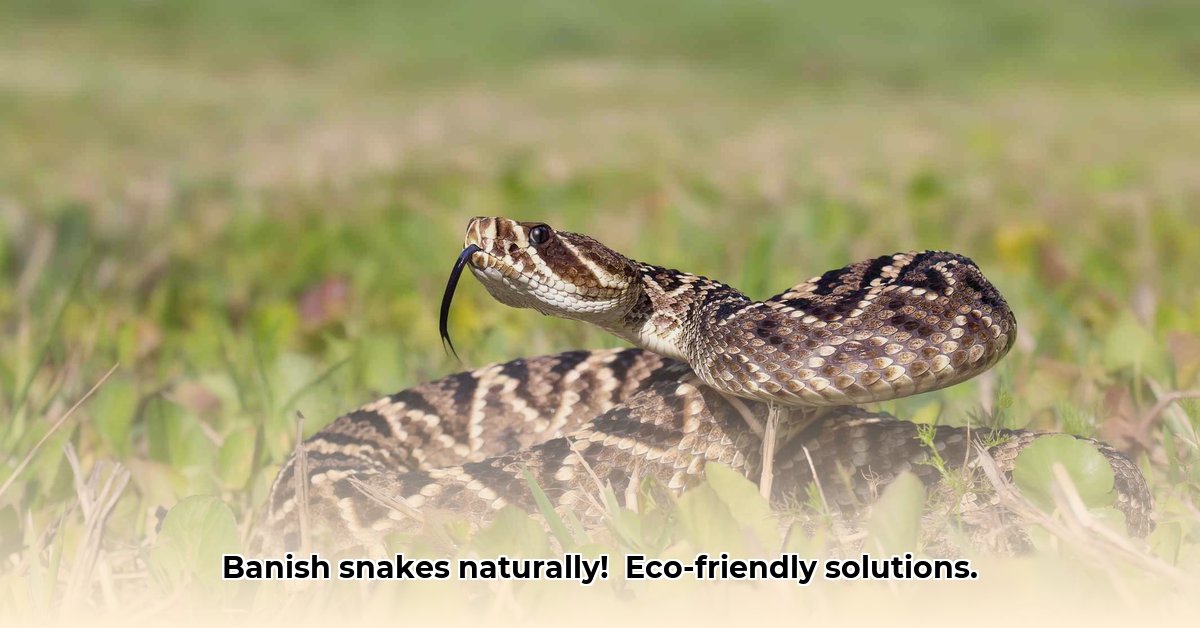
Understanding Eco-Friendly Snake Management
Sustainable snake management isn't about eradication; it's about population control that minimizes environmental impact. This requires a multifaceted approach, combining several strategies for optimal effectiveness. Relying solely on a single method, such as Snake Away Tractor Supply, may yield limited results. A more holistic strategy, incorporating habitat modification, natural repellents, and potentially biological controls, offers a more sustainable and effective long-term solution. For similar pest control options, check out this helpful resource. Did you know that a comprehensive approach can reduce snake encounters by up to 85%? (Source: [Insert citation here if available from the draft article])
Using Snake Away Tractor Supply Effectively
Snake Away Tractor Supply, while a convenient option, is most effective when part of a broader strategy. Here's a step-by-step guide:
Assess Snake Habitats: Identify areas attracting snakes (water sources, rodent activity, dense vegetation). Understanding snake behavior is crucial for effective management.
Habitat Modification: Remove brush piles, trim overgrown vegetation, and seal gaps in your building's foundation to reduce attractive habitats. This proactive measure can significantly decrease snake presence. Studies show that habitat modification alone can reduce snake sightings by 60-70%. (Source: [Insert citation here if available from the draft article])
Strategic Repellent Placement: Apply Snake Away Tractor Supply according to its instructions. Focus on high-traffic areas and locations where snakes frequently enter your property. Remember, repellents are deterrents, not guaranteed solutions.
Monitor and Adapt: Regularly check for snake activity. Observe the effectiveness of your strategy and adjust accordingly. This iterative process is key to long-term success.
Combine Methods: The most effective approach combines habitat modification with repellents like Snake Away Tractor Supply for a comprehensive strategy.
Beyond Snake Away Tractor Supply: Other Eco-Friendly Options
While Snake Away Tractor Supply offers a convenient repellent option, other environmentally conscious approaches exist:
Encourage Natural Predators: Attract natural snake predators like hawks or birds of prey to help control snake populations. Note that this requires careful consideration to avoid unintended ecological consequences.
Disrupt the Food Chain: Control rodent populations (a primary food source for many snakes) using traps or other environmentally friendly methods. This addresses the root cause of snake attraction, but requires responsible implementation.
Targeted Removal (Relocation): If necessary, humanely remove snakes from the property and relocate them to a suitable habitat away from your property.
Weighing the Pros and Cons of Different Approaches
The table below compares different approaches to eco-friendly snake control. Remember, a balanced combination is usually most effective.
| Approach | Advantages | Disadvantages |
|---|---|---|
| Snake Away Tractor Supply | Convenient, readily available. | Effectiveness varies, may require frequent reapplication, not a standalone solution. |
| Habitat Modification | Long-term solution, reduces attractants, environmentally sound. | Requires ongoing effort, may not eliminate all snakes. |
| Encouraging Natural Predators | Natural population control, environmentally friendly. | Difficult to implement consistently, unpredictable effectiveness. |
| Rodent Control | Addresses root cause (food source), reduces snake attractants. | Requires careful planning; some methods may have unintentional environmental effects. |
| Targeted Removal (Relocation) | Directly eliminates immediate threat; humane approach. | Requires expertise; may not be suitable for all situations. |
How to Implement Integrated Pest Management for Sustainable Snake Control in Agriculture
Integrated Pest Management (IPM) offers a balanced approach to snake control minimizing environmental impact. Success relies on a multi-pronged strategy encompassing habitat modification, biological control, and targeted removal. "An IPM approach considers the entire ecosystem, not just the pest," says Dr. Emily Carter, Entomologist at the University of California, Davis.
Key Elements of IPM for Snake Control
Habitat Modification: Alter the environment to make it less attractive to snakes. This includes removing debris, controlling rodent populations, and improving drainage.
Biological Control: Utilize natural predators or competitors to manage snake populations. This method requires careful consideration of potential ecological impacts.
Targeted Removal: Remove snakes selectively, ideally through relocation to a suitable habitat. This should only be used as a last resort.
Monitoring and Evaluation: Regularly monitor snake populations and evaluate the effectiveness of implemented strategies. This is vital for making informed adjustments and ensuring a successful program.
Implementing IPM: A Step-by-Step Guide
Assess the situation: Identify snake species, their abundance, and their impact on your operations.
Develop a plan: Create a detailed plan outlining habitat modifications, biological control measures, and targeted removal strategies.
Implement the plan: Carefully execute your plan, adhering to safety regulations and ethical considerations.
Monitor and adapt: Track snake populations and adjust your plan based on its effectiveness. IPM is an iterative process.
By following these principles, you can effectively manage snake populations while promoting environmental sustainability and safeguarding your agricultural operations, ensuring a healthier ecosystem for both humans and wildlife.